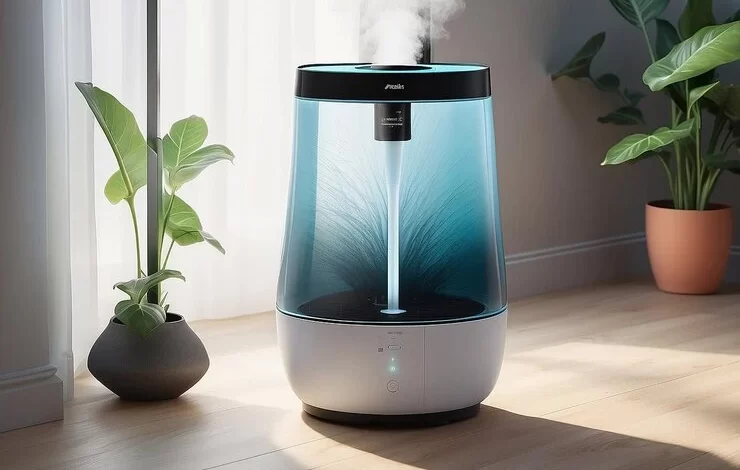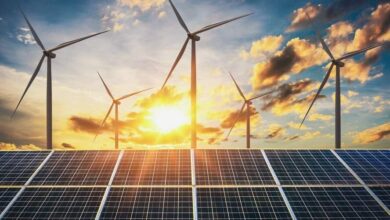Where to Start When Upgrading to Energy-Efficient Appliances

Have you ever opened your utility bill and felt your heart sink? You’re not alone. With energy costs skyrocketing, many of us are looking for ways to cut back on our energy consumption. But what if I told you that you could slash your energy bills and help the environment at the same time? Sounds too good to be true, right? Well, buckle up, because we’re about to dive into the world of energy-efficient appliances – your ticket to a greener home and a fatter wallet.
Key Takeaways:
- Energy Star appliances can significantly reduce your energy consumption and costs.
- Investing in energy-efficient products helps reduce your carbon footprint.
- Understanding energy labels and ratings is crucial for making informed decisions.
- Proper use and maintenance of appliances can maximize energy savings.
- Government incentives and rebates can make energy-efficient upgrades more affordable.
Let’s face it: our homes are packed with appliances that suck up energy like a vacuum cleaner on steroids. From the fridge that keeps your beer cold to the washing machine that tackles your gym socks, these modern conveniences are energy hogs. But here’s the good news: the latest energy-efficient models can help you save energy and money without sacrificing performance.
The Energy Star Difference: Your Wallet’s New Best Friend
Ever noticed that little blue star logo on some appliances? That’s the Energy Star label, and it’s about to become your new shopping buddy. Energy Star is a program run by the U.S. Environmental Protection Agency and the Department of Energy. It’s like a seal of approval for appliances that meet strict energy efficiency guidelines.
But what does this actually mean for you? Let’s break it down:
- Energy Star certified products use 10-50% less energy than standard models.
- They can help you save hundreds of dollars on energy bills each year.
- By choosing Energy Star, you’re helping to reduce greenhouse gas emissions.
It’s not just about saving a few bucks (although that’s pretty sweet). When you opt for Energy Star appliances, you’re joining a global movement to combat climate change. In fact, since its inception, Energy Star has helped prevent more than 4 billion metric tons of greenhouse gas emissions. That’s like taking every car in the U.S. off the road for an entire year!
Refrigerators: Keeping Your Food (and the Planet) Cool
Let’s start with the big guy in your kitchen – the refrigerator. This appliance runs 24/7, so it’s a prime target for energy savings. Energy Star certified refrigerators are at least 15% more efficient than non-certified models. But what does that mean in real terms?
Imagine this: You’re still rocking that avocado-green fridge from the ’80s. (No judgment, retro is in!) But by upgrading to an Energy Star model, you could save up to $300 over the next five years. That’s enough for a pretty sweet vacation, if you ask me.
But it’s not just about the money. Modern energy-efficient refrigerators come with cool features (pun intended) that can make your life easier:
- Adjustable shelves for flexible storage
- Humidity-controlled crisper drawers to keep your veggies fresh
- Door-in-door designs for quick access to frequently used items
- Smart features that let you control settings from your phone
And let’s not forget about the freezer. Energy Star certified refrigerator-freezer combos use advanced compressor technology and improved insulation to keep your ice cream frozen solid while using less energy.
Dishwashers: Cleaning Up Your Energy Act
Next up, let’s talk about everyone’s least favorite chore – doing the dishes. Energy Star certified dishwashers are not only a lifesaver for your pruney fingers but also for your energy bills. These bad boys use about 12% less energy and 30% less water than standard models.
But how do they work their magic? It’s all about smart design:
- Soil sensors adjust the cycle time and water use based on how dirty your dishes are
- Improved water filtration systems remove food particles, so you can skip pre-rinsing
- Efficient jets and rack designs ensure thorough cleaning with less water
Here’s a little-known fact: using an Energy Star dishwasher can actually save more energy, water, and money than washing dishes by hand. So the next time someone gives you grief about using the dishwasher, hit ’em with that knowledge bomb!
Washing Machines: Cleaning Green
Alright, let’s dive into the laundry room. Energy Star certified washing machines are like the superheroes of the appliance world. They use about 25% less energy and 33% less water than standard washers. That’s a lot of savings, both for your wallet and the planet.
But what makes these washers so special? Let’s break it down:
- High-efficiency (HE) models use a tumbling action instead of an agitator, which is gentler on clothes and uses less water.
- Advanced sensors detect the size of your load and adjust water levels accordingly.
- High-speed spin cycles extract more water, reducing drying time (and energy use).
And here’s a pro tip: washing your clothes in cold water can save you even more energy. Most modern detergents work just as well in cold water, so you can save energy without sacrificing cleanliness.
Heat Pumps: The Unsung Heroes of Home Efficiency
Now, let’s talk about an appliance that doesn’t get enough love – the heat pump. These versatile machines can both heat and cool your home, making them a year-round energy-saving powerhouse.
Energy Star certified heat pumps are about 9% more efficient in heating mode and 16% more efficient in cooling mode than standard models. But what does that mean for your home?
- Lower energy bills year-round
- Improved indoor air quality (they can help remove excess moisture from the air)
- More consistent temperatures throughout your home
If you’re in the market for a new heating and cooling system, a heat pump could be your ticket to energy efficiency nirvana.
Energy-Efficient Appliances: By the Numbers
Let’s get down to brass tacks and look at some hard numbers. The following table breaks down the potential energy and cost savings for various Energy Star certified appliances:
| Appliance | Energy Savings | Annual Cost Savings |
|---|---|---|
| Refrigerator | 15% | $50-$100 |
| Dishwasher | 12% | $35 |
| Washing Machine | 25% | $45 |
| Heat Pump | 9-16% | $115 |
| Freezer | 10% | $30 |
Remember, these are just averages. Your actual savings may vary depending on your usage patterns and local energy costs. But one thing’s for sure – these savings add up over time!
Shopping Smart: How to Choose Energy-Efficient Appliances
Alright, so you’re convinced that energy-efficient appliances are the way to go. But how do you navigate the sea of options out there? Don’t worry, I’ve got your back. Here’s a step-by-step guide to shopping for energy-efficient appliances:
- Look for the Energy Star label. This is your first clue that an appliance meets strict efficiency guidelines.
- Check the EnergyGuide label. This yellow tag gives you an estimate of the appliance’s annual energy consumption and operating cost.
- Compare the Seasonal Energy Efficiency Ratio (SEER) for air conditioners and heat pumps. The higher the SEER rating, the more efficient the unit.
- For water heaters, look at the Energy Factor (EF). A higher EF means greater efficiency.
- Consider the size of the appliance. Bigger isn’t always better – an oversized appliance can waste energy.
- Look for ENERGY STAR Most Efficient products. These are the crème de la crème of energy efficiency.
- Don’t forget about features. Things like adjustable thermostats, programmable settings, and smart home compatibility can help you save even more energy.
Beyond the Big Boys: Other Energy-Efficient Appliances to Consider
We’ve covered the heavy hitters, but there are plenty of other appliances that can help you save energy and money. Let’s take a quick tour:
- Stoves and Ovens: Look for models with convection features, which circulate hot air for more even cooking and faster preheating.
- Toaster Ovens: These little guys can use up to 50% less energy than a conventional oven for small jobs.
- Water Heaters: Heat pump water heaters can be 2-3 times more efficient than conventional models.
- Dehumidifiers: Energy Star certified models use 15% less energy than standard units.
- Air Purifiers: Energy Star certified models are 40% more energy-efficient than standard models.
Remember, every little bit helps. Even small appliances can add up to big savings over time.
Maximizing Your Savings: Tips for Using Appliances Efficiently
Buying energy-efficient appliances is just the first step. To really maximize your savings, you need to use them wisely. Here are some tips to help you squeeze every last drop of efficiency out of your appliances:
- Refrigerators:
- Keep the coils clean
- Don’t overfill it (air needs to circulate)
- Set the temperature to 35-38°F for the fridge and 0°F for the freezer
- Dishwashers:
- Run full loads
- Use the air-dry setting instead of heat dry
- Scrape dishes instead of pre-rinsing
- Washing Machines:
- Wash full loads
- Use cold water when possible
- Choose the high-speed spin cycle to remove more water
- Dryers:
- Clean the lint filter after every load
- Use the moisture sensor option if available
- Don’t over-dry clothes
- Heat Pumps:
- Change filters regularly
- Keep outdoor units clear of debris
- Use a programmable thermostat to adjust temperatures when you’re away or sleeping
The Future of Energy Efficiency: What’s on the Horizon?
The world of energy-efficient appliances is constantly evolving. As technology advances, we’re seeing some exciting developments on the horizon:
- Smart Appliances: These connected devices can learn your habits and adjust their operation for maximum efficiency. Imagine a washing machine that knows the best time to run based on your energy rates!
- Advanced Materials: New insulation materials and coatings are making appliances more efficient than ever.
- Renewable Energy Integration: Some appliances are being designed to work seamlessly with solar panels and other renewable energy sources.
- Improved Heat Pump Technology: Researchers are working on heat pumps that can operate efficiently in colder climates, expanding their usefulness.
- Natural Refrigerants: Some manufacturers are exploring alternatives to traditional refrigerants that are more environmentally friendly.
The future looks bright (and energy-efficient)!
Government Incentives: Getting Paid to Save Energy
Here’s some news that’ll make your wallet do a happy dance: many governments offer incentives for buying energy-efficient appliances. These can come in the form of:
- Tax credits
- Rebates
- Low-interest loans
Check out the Database of State Incentives for Renewables & Efficiency (DSIRE) at dsireusa.org to see what’s available in your area. You might be surprised at how much you can save!
The Bottom Line: Investing in Efficiency Pays Off
Let’s wrap this up with some real talk. Yes, energy-efficient appliances often cost more upfront. But think of it as an investment – in your future utility bills and in the planet.
Let’s do some quick math:
- Average cost difference between standard and Energy Star appliances: $50-$100
- Average annual energy savings: $75-$150
- Payback period: 1-2 years
After that, it’s all savings, baby! And remember, these appliances typically last 10-15 years. That’s a lot of money staying in your pocket over time.
But it’s not just about the money. By choosing energy-efficient appliances, you’re:
- Reducing your carbon footprint
- Conserving water and other resources
- Supporting companies that prioritize sustainability
- Setting a good example for friends and family
It’s a win-win-win situation!
Your Next Steps: Making the Switch to Energy Efficiency
Ready to start your energy-efficient journey? Here’s what you can do right now:
- Take stock of your current appliances. How old are they? How much energy do they use?
- Research Energy Star certified models that fit your needs and budget.
- Check for local incentives and rebates.
- Start with the appliances that use the most energy (usually refrigerators, HVAC systems, and water heaters).
- Implement energy-saving habits in your daily routine.
Remember, you don’t have to replace everything at once. Even small changes can make a big difference over time.
So, are you ready to join the energy efficiency revolution? Your wallet (and the planet) will thank you. Now go forth and save some energy!


